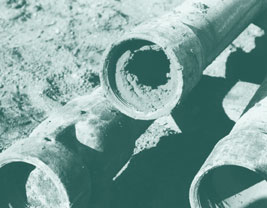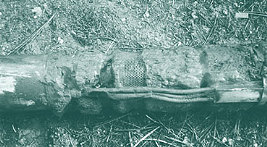 |
| Mineral Scale
|
 |
| Slime Bacteria
|
- Mineral scale
- Slime bacteria
- Silt or sand buildup in the screen or the well itself
- Physical obstruction of the screen or borehole
- Changes in the aquifer or the geological area around the well site
- Limitations of the aquifer
The naturally occurring heterotrophic bacteria present in every aquifer can produce slime. Water velocity constantly draws these bacteria in, increasing their numbers in the well. The iron bacteria present in upper-surface soil can be transported into a well during drilling or well/pump maintenance. These bacteria have a life span of only about 30 minutes. When dead, any slime produced will slowly harden into an oxide of iron, manganese or whatever other nutrient is processed. Chlorine is not effective at penetrating this biological mass and won't kill these bacteria. It only retards their growth for a short period of time. Any attempt to kill live bacteria will only partially succeed and will leave oxides in place as a nutrient base for future bacteria. The growth then expands exponentially and plugging continues. If slime is present in a well, three conditions may exist:
- Slime
- Oxides from decaying bacteria
- The potential for mineral scale
To determine if hydro-fracturing is right for
your well, contact us today!
509-466-5078 · 800-368-0998
Email: djminden@msn.com
Scott Graphics © 2018 All Rights Reserved
